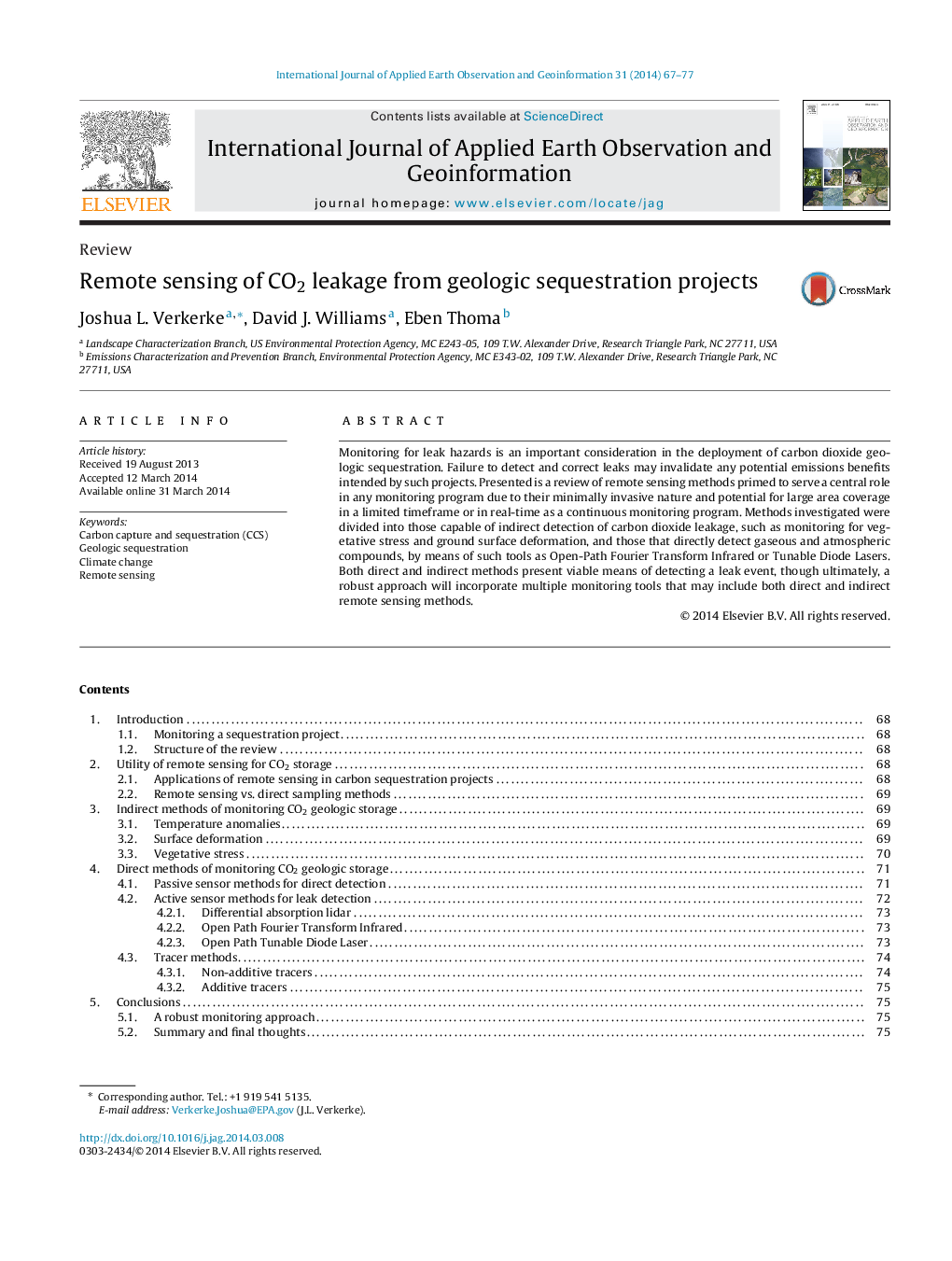| Article ID | Journal | Published Year | Pages | File Type |
|---|---|---|---|---|
| 6348899 | International Journal of Applied Earth Observation and Geoinformation | 2014 | 11 Pages |
Abstract
Monitoring for leak hazards is an important consideration in the deployment of carbon dioxide geologic sequestration. Failure to detect and correct leaks may invalidate any potential emissions benefits intended by such projects. Presented is a review of remote sensing methods primed to serve a central role in any monitoring program due to their minimally invasive nature and potential for large area coverage in a limited timeframe or in real-time as a continuous monitoring program. Methods investigated were divided into those capable of indirect detection of carbon dioxide leakage, such as monitoring for vegetative stress and ground surface deformation, and those that directly detect gaseous and atmospheric compounds, by means of such tools as Open-Path Fourier Transform Infrared or Tunable Diode Lasers. Both direct and indirect methods present viable means of detecting a leak event, though ultimately, a robust approach will incorporate multiple monitoring tools that may include both direct and indirect remote sensing methods.
Related Topics
Physical Sciences and Engineering
Earth and Planetary Sciences
Computers in Earth Sciences
Authors
Joshua L. Verkerke, David J. Williams, Eben Thoma,
